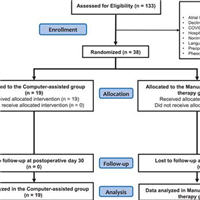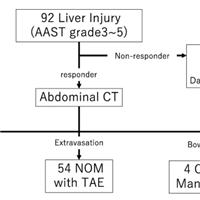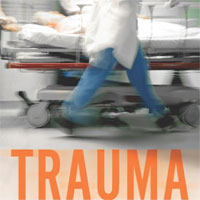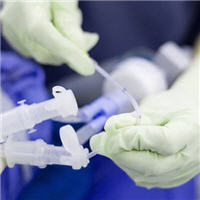Tag: surgery

Computer-assisted Individualized Hemodynamic Management Reduces Intraoperative Hypotension
In patients having intermediate- to high-risk surgery, computer-assisted individualized hemodynamic management significantly reduces intraoperative hypotension compared to a manually controlled goal-directed approach. All... read more

Carotid Blowout Syndrome: Modern Trends in Management
Carotid blowout syndrome (CBS) refers to rupture of the carotid artery and is an uncommon complication of head and neck cancer that can be rapidly fatal without prompt diagnosis and intervention. CBS develops when a damaged... read more

Floating Feathers: A Doctor’s Harrowing Experience as a Patient Within Conventional Medicine and an Impassioned Call for the Future of Care in America
Dr. Ross I.S. Zbar spent his career as a plastic surgeon, in the US as well as abroad in developing countries, mending disease- and trauma-related deformities--and he was never hesitant to make his voice heard as an advocate... read more

Transcatheter arterial embolization for severe blunt liver injury in hemodynamically unstable patients
Transcatheter arterial embolization (TAE) in hemodynamically unstable patients who responded to initial infusion therapy to some extent has acceptable in-hospital mortality and clinical failure rates. Hemodynamic instability... read more

Sedation with Midazolam After Cardiac Surgery in Children with and without Down Syndrome
The majority of children with and without Down syndrome required additional sedation after cardiac surgery. This pharmacokinetic and pharmacodynamic analysis does not provide evidence for different dosing of midazolam in... read more

Trauma: My Life as an Emergency Surgeon
TRAUMA is Dr. Cole's harrowing account of his life spent in the ER and on the battlegrounds, fighting to save lives. In addition to his gripping stories of treating victims of gunshot wounds, stabbings, attempted suicides,... read more

Operative Techniques and Recent Advances in Acute Care and Emergency Surgery
The aim of this book is to identify and shed new light on the main surgical practices involved in acute care and trauma surgery. Adopting an evidence-based approach, a multidisciplinary team of surgeons and intensivists... read more

Operative Lung Deflation During OLV with a DL-ETT
Operative lung deflation during lung deflation during one-lung ventilation (OLV) with a double-lumen endotracheal tube (DL-ETT) is faster when the operative lumen remains closed before pleural opening thus preventing it from... read more

Practice Recommendations on Neuraxial Anesthesia and Peripheral Nerve Blocks during the COVID-19 Pandemic
General anesthesia (GA) with airway intervention leads to aerosol generation, which exposes the health care team to risk of transmission of COVID-19 both during intubation and extubation. The odds of transmission of acute... read more

Rapid detection of clinically-relevant plasma direct oral anticoagulant levels following acute traumatic injury
In urgent clinical situations, such as trauma, urgent surgery or before thrombolysis, rapid quantification of direct oral anticoagulant plasma drug levels is warranted. Using the ClotPro® analyser, we assessed two novel... read more

Artificial Intelligence in Telemetry: What Clinicians Should Know
Advances in artificial intelligence are beginning to unlock the potential of telemetry data to directly inform diagnosis and personalized treatment. We can see hints of this in considering the case above. Is a second... read more

Gabapentinoids and the Risk of Opioid-Related Adverse Events in Surgical Patients
In this real-world cohort study of patients who underwent major surgery, concomitant use of gabapentinoids with opioids was associated with increased risk of opioid overdose and other opioid-related adverse events; however,... read more

Modifiable Factors Associated With Chronic Pain After Surgery for Distal Radius Fractures
In this study, preoperative pain, time to surgery, and procedure type were modifiable factors associated with chronic pain 1 year after DRF treated with surgery. Adequate pain control in patients with acute DRFs even... read more

Sick Meningitis, POCUS for Pneumoperitoneum, and Treatment of CHS
Today on the emDocs cast with Brit Long, MD (@long_brit) and Manpreet Singh, MD (@MprizzleER) we cover three posts: the sick meningitis patient, ultrasound for pneumoperitoneum, and treatment of cannabiniod hyperemesis syndrome. Part... read more




